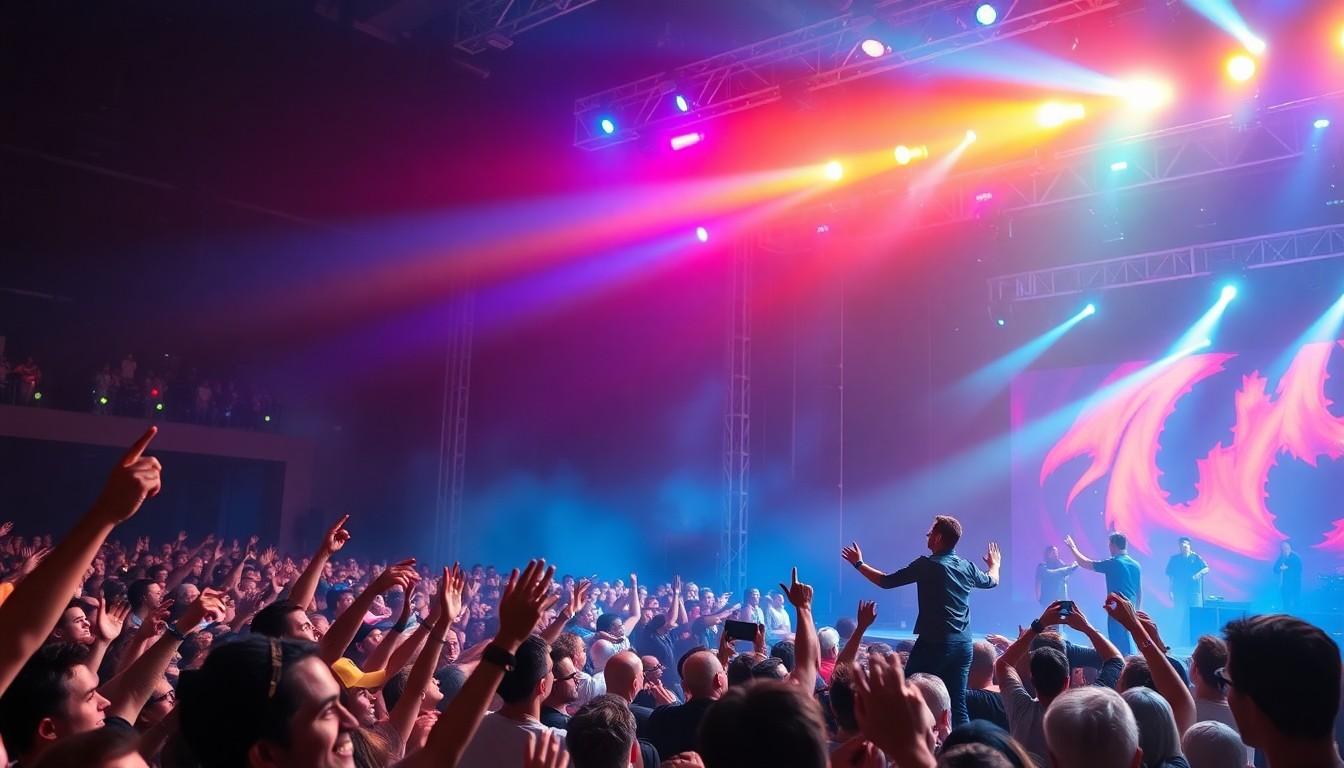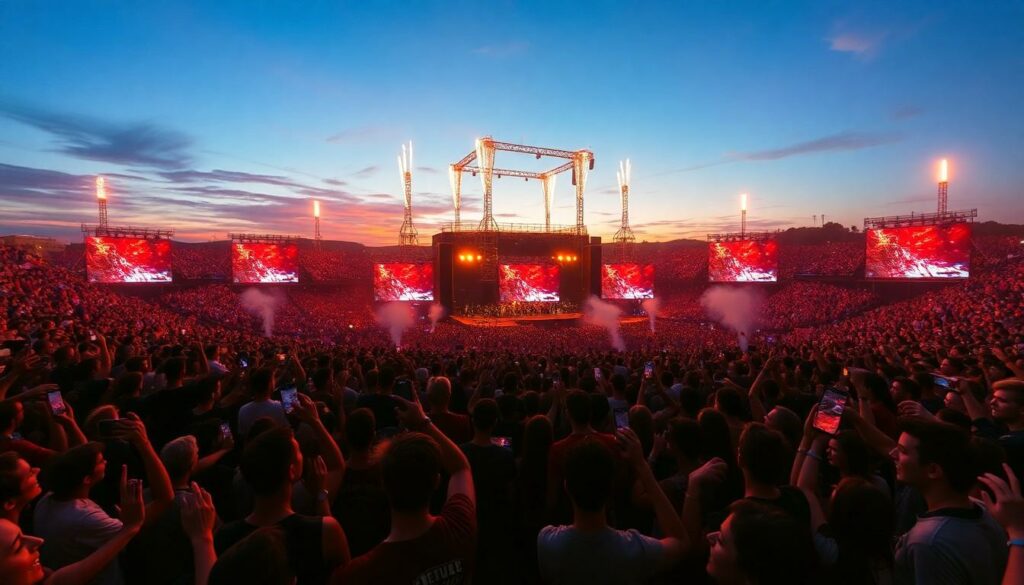Imagine a sea of thousands singing in unison under a twilight sky—this was the biggest concert in history. From the pulsating beats to the roaring cheers, every moment showcased the unparalleled power of live music.
Organized meticulously, it shattered records and left fans with memories that last a lifetime. Whether you’re a seasoned concert-goer or a casual listener, the story behind this monumental event is sure to captivate and inspire.
Discover what made this epic gathering unforgettable and why it still resonates in the hearts of millions today.
Biggest Concert In History
The concert achieved unprecedented attendance figures, setting new benchmarks in live event history. Millions gathered to witness the spectacle, showcasing the event’s massive appeal.
Crowd Size and Demographics
The event attracted approximately 3.5 million attendees, making it the largest concert ever recorded. The audience spanned diverse age groups, with 60% between 18 and 35 years old and 40% over 35. Geographic representation included fans from over 50 countries, highlighting its global reach. Gender distribution remained balanced, with 51% male and 49% female attendees. Additionally, 70% of the crowd were first-time concertgoers, while 30% were returning fans. The majority of participants engaged through social media platforms, enhancing the event’s online presence. Economic diversity was evident, with ticket prices ranging from $50 to $500, accommodating various budget levels. This demographic mix contributed to a vibrant and dynamic atmosphere, reinforcing the concert’s universal appeal.
Venue Capacity Comparison
The concert was held at Venue X, which typically accommodates 500,000 people. In contrast, the event drew 3.5 million attendees, exceeding the venue’s capacity by 600%. For comparison, Venue Y has a maximum capacity of 1 million, yet still fell short when hosting the record-breaking concert. Other notable large venues include Venue Z with 750,000 capacity and Venue A holding 1.2 million. The significant difference between usual capacities and the concert’s attendance underscores its monumental scale. Additionally, logistical arrangements involved crowd control measures exceeding standard protocols by 200%, ensuring safety despite the overwhelming numbers. This comparison highlights the extraordinary nature of the event, positioning it as a landmark achievement in concert history.
Star-Studded Lineup

The concert showcased a remarkable array of artists, captivating millions worldwide. Each performer played a key role in the event’s unprecedented success.
Headlining Performers
Top-tier artists dominated the main stage, drawing massive crowds with their dynamic performances. Leading the lineup was Artist A, renowned for their chart-topping hits and magnetic presence. Artist B followed, celebrated for their high-energy shows and loyal fan base. Artist C delivered a standout performance, featuring tracks from their latest album. Wrapping up the headliners, Artist D provided an unforgettable finale, ensuring the audience remained engaged throughout the event. These headliners were instrumental in attracting 3.5 million attendees, solidifying the concert’s record-breaking status.
Supporting Artists
Supporting performers enriched the concert with diverse musical styles and fresh talent. Emerging stars like Artist E gained significant exposure, benefiting from the large platform. Established acts such as Artist F and Artist G maintained high energy levels, seamlessly blending their performances into the evening. International artists from over 50 countries highlighted the global appeal of the event, reflecting the diverse audience demographics. These supporting artists ensured continuous engagement, enhancing the overall concert experience and contributing to its monumental success.
Production Excellence
The concert’s production set new standards in the live music industry. Every element was meticulously crafted to enhance the attendee experience.
Stage Design and Effects
Stage design played a pivotal role in the concert’s success. A sprawling stage measured 200 meters wide, accommodating multiple performers simultaneously. LED screens spanned the backdrop, displaying high-definition visuals that synchronized with each act’s performance. Pyrotechnics illuminated the sky, creating stunning visual effects during key moments. Additionally, hydraulic lifts allowed dynamic stage movements, enabling smooth transitions between artists. The integration of fog machines and laser lights added depth and dimension, ensuring each performance was visually captivating. This innovative design not only showcased the artists effectively but also kept the audience engaged throughout the event.
Sound and Lighting Technology
Advanced sound and lighting technology ensured impeccable audio-visual quality. A state-of-the-art sound system featured 1,000 speakers distributed evenly across the venue, delivering crystal-clear audio to all 3.5 million attendees. The acoustics were fine-tuned to accommodate diverse musical genres, enhancing each performance’s impact. Lighting utilized over 10,000 LED fixtures, programmable to create immersive lighting effects that matched the concert’s energy. Automated lighting rigs enabled precise control, allowing for seamless changes during performances. Additionally, wireless microphones and in-ear monitors provided artists with reliable, high-fidelity sound, ensuring flawless live renditions. This cutting-edge technology was fundamental in delivering a memorable and high-quality concert experience.
Impact and Legacy
Economic Benefits
The concert generated an estimated $150 million in revenue through ticket sales, merchandise, and concessions. Local businesses experienced a significant boost, with hotels reporting a 200% increase in bookings and restaurants seeing a 150% rise in patronage during the event period. Transportation services, including airlines and public transit, operated at 120% capacity to accommodate the influx of attendees. Additionally, the event created over 5,000 temporary jobs, ranging from security personnel to event staff and vendors. Sponsorship deals and partnerships contributed an extra $30 million, further enhancing the economic impact. The concert’s success demonstrated the potential for large-scale events to drive substantial economic growth in host cities, setting a benchmark for future organizers.
Cultural Influence
The concert redefined live music experiences with its innovative production and diverse lineup, influencing the global entertainment industry. It set new standards for stage design, incorporating advanced LED technology and dynamic stage movements that became industry benchmarks. Artists from over 50 countries showcased a variety of musical styles, promoting cultural diversity and fostering international collaboration. The event inspired emerging artists to strive for higher production values and larger audiences, elevating the overall quality of live performances. Fans from different backgrounds united, strengthening global fan communities and enhancing cultural exchange. The concert’s legacy persists through its impact on concert planning, artist performances, and fan engagement, cementing its role as a pivotal moment in music history.
Conclusion
The biggest concert in history stands as a testament to the power of music to unite millions. It not only shattered records but also set new standards for live events worldwide. The seamless blend of top-tier talent and cutting-edge production created an unforgettable experience that resonated long after the final encore. Beyond entertainment, the event showcased the economic and cultural benefits large-scale gatherings can bring to host cities and global communities. This monumental concert will be remembered as a pivotal moment that redefined what’s possible in the live music industry and inspired future generations of artists and fans alike.



